Tag Archives: CAESES
MantiumCAE Wins Last 2015 KVRC Race Thanks to CAESES
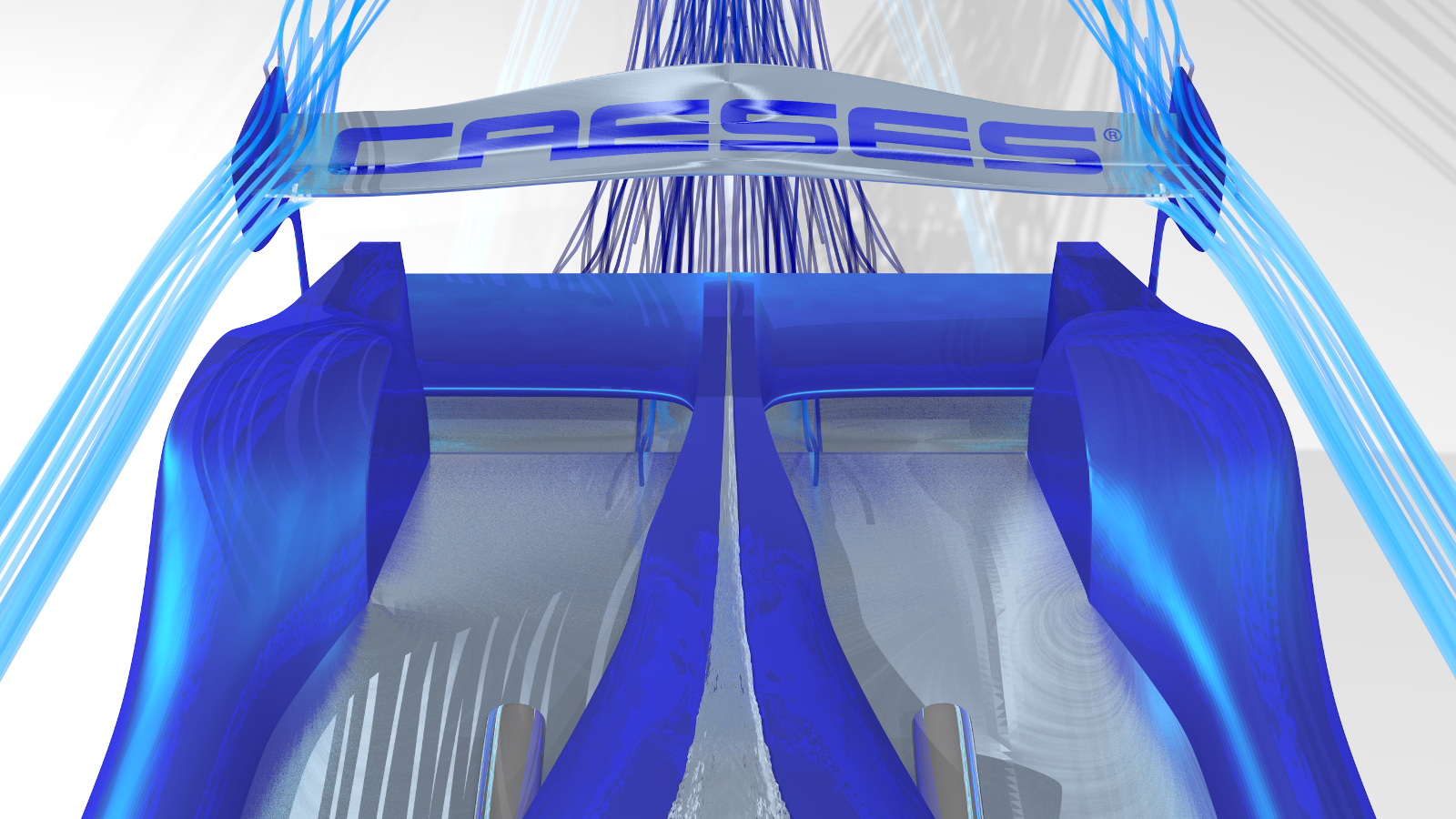 MantiumRAY the virtual racing team of MantiumCAE has won the last 2015 KVRC race. This was mainly achieved with considerable use of CAESES.
MantiumRAY the virtual racing team of MantiumCAE has won the last 2015 KVRC race. This was mainly achieved with considerable use of CAESES.
As written in an earlier post, CAESES was used to create a new rear wing to improve overall aerodynamic efficiency. Now some colorful post-processing images are available:

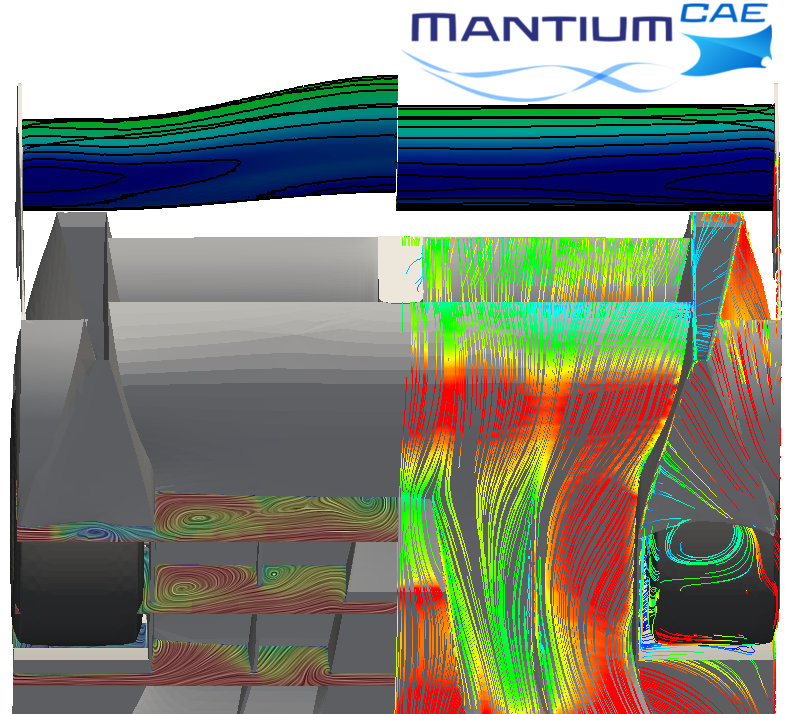
Just looking at pressure distributions or statistical data from the optimization does not help to understand why this new wing is so much better compared to the old straight wing. Looking at the lift distribution of the two wings reveals more:

While the lift for the straight wing is almost equally distributed along the wing span with a bit increase at the ends, the curved wing has its lift maximum at the wing center. This is a nice example of how optimization techniques can help to develop new knowledge. In this case the resulting lift distribution might not be very surprising, esp. for an air craft engineer. It should be kept in mind that the optimization algorithm did not “know” anything about lift distributions but came up with something very plausible. Hard numbers also confirm the improved performance. The lift to drag ratio is increased by 27% compared to the already very good straight wing.
A 27% increase in aerodynamic efficiency is very good for such an important part of the car. The other two most important parts are the front wing and the diffuser. The air flow and pressure distribution under the car can be seen in the following slice taken 0.5m off of the vehicle center:
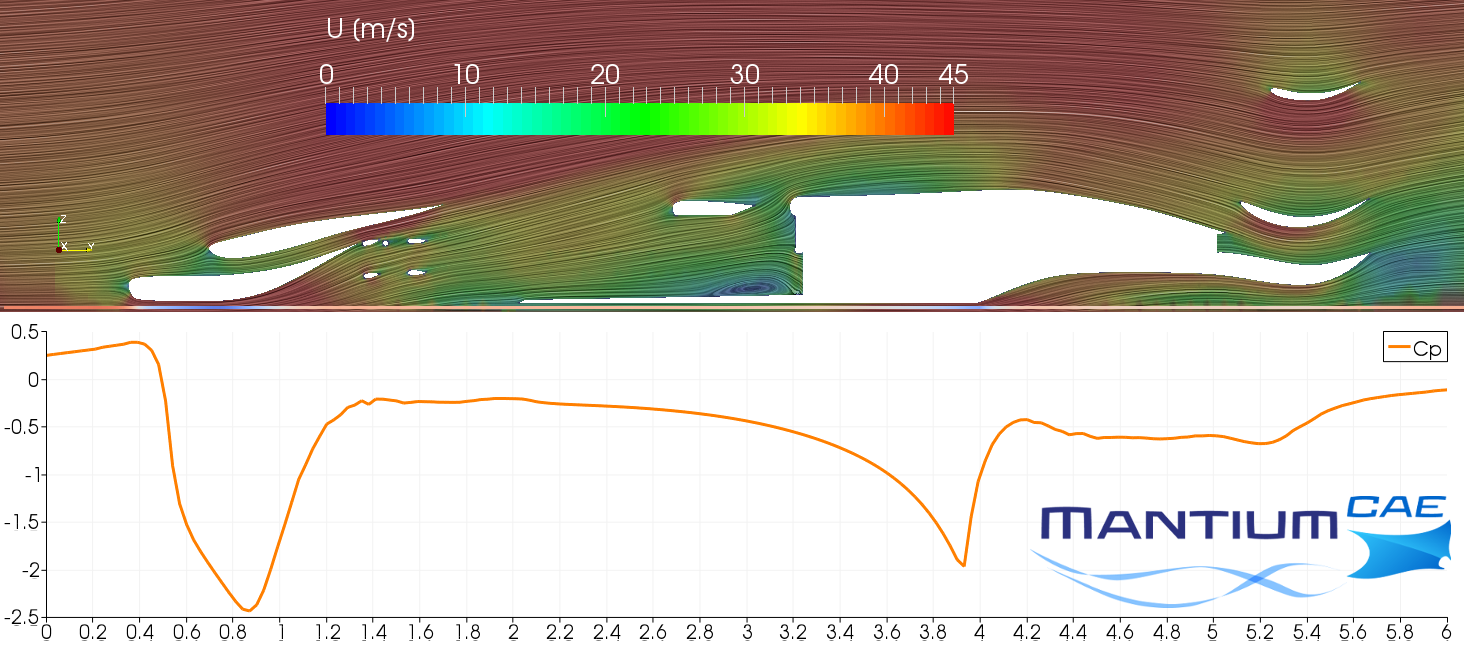
The image shows two things. There are still a lot of parts that can be improved. The upper side impact structure could be covered much smarter. And the recirculation zone right under it does not look to nice either.
The pressure distribution might help to explain the strange diffuser shape. The shape was already a result from an earlier optimization and was created once more for this race. Looking at the pressure distribution it seems that the downward bump at the end somehow helps the create a zone of slightly reduced pressure ahead of it. Further investigations are necessary and will be done in the future.
Apart from that it can be seen that the front wing creates a lot of downforce although it was even raised a bit to help balance the car.
All this results in a victory with a nice gap to the second car:

Establishing a good process using geometry parametrization, coupling it with a CFD software and running optimizations is never an easy process. It requires experience, time and a lot of patience. It took some races for MantiumCAE to successfully implement it for the challenge. Next year everything will be ready and MantiumRAY should be in a good position to continue winning races.
Hopefully this article helps and gives some insight into how a car for the competition can be developed and helps to understand what can be done with CFD. Even more help is given by one of the competitors, CAEdevice from Italy. Their car can be downloaded here. This should be a very good starting point for anyone who wants to join this fantastic challenge.
Below are two images of the final car with some stream lines:
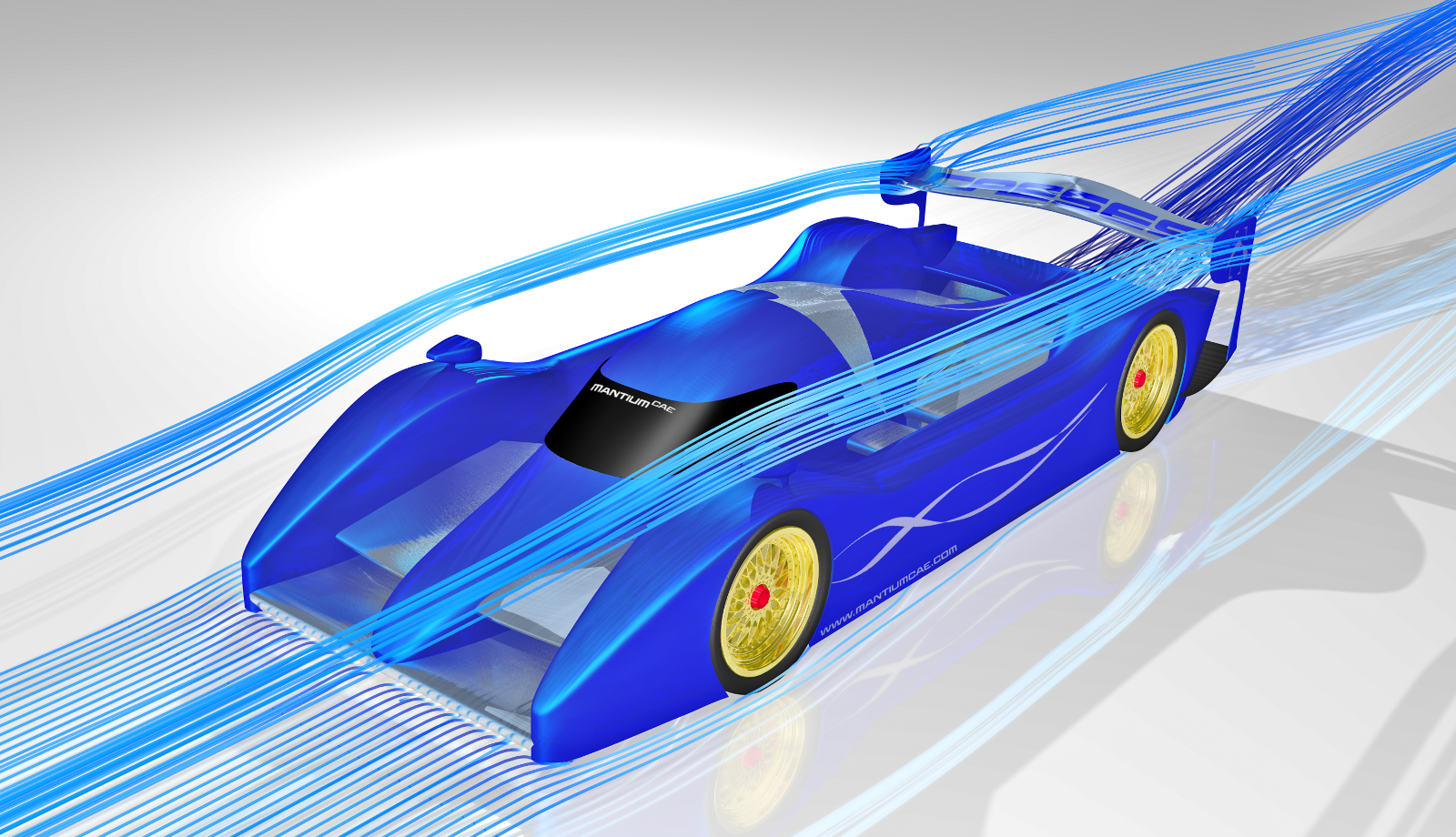
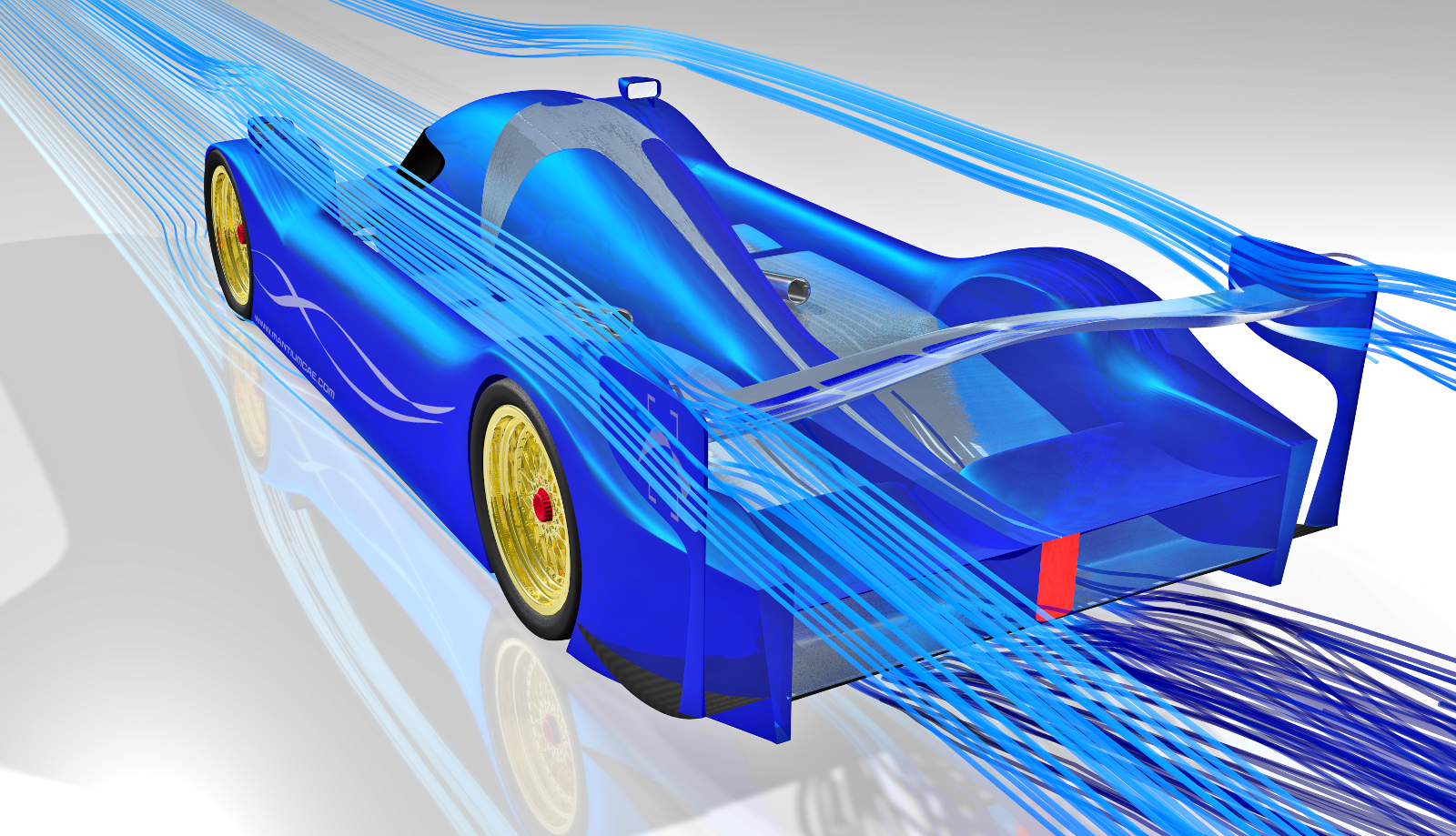
The car still has a lot of space available for sponsors. Esp. decals of HPC providers should look very good.
MantiumCAE new CAESES Channel Partner & Last KVRC Race
MantiumCAE is proud to announce being a new channel partner for CAESES for the DACH region.
CAESES is a great software to parametrize complex geometries in a very efficient way.
The parametrized geometries can subsequently be used to execute DoEs or optimizations, as CAESES couples with many CFD products like XFlow or OF.
This homepage will be updated soon. For more information, please visit the official homepage, where it is even possible to download a free version of CAESES. Please contact us for more information.
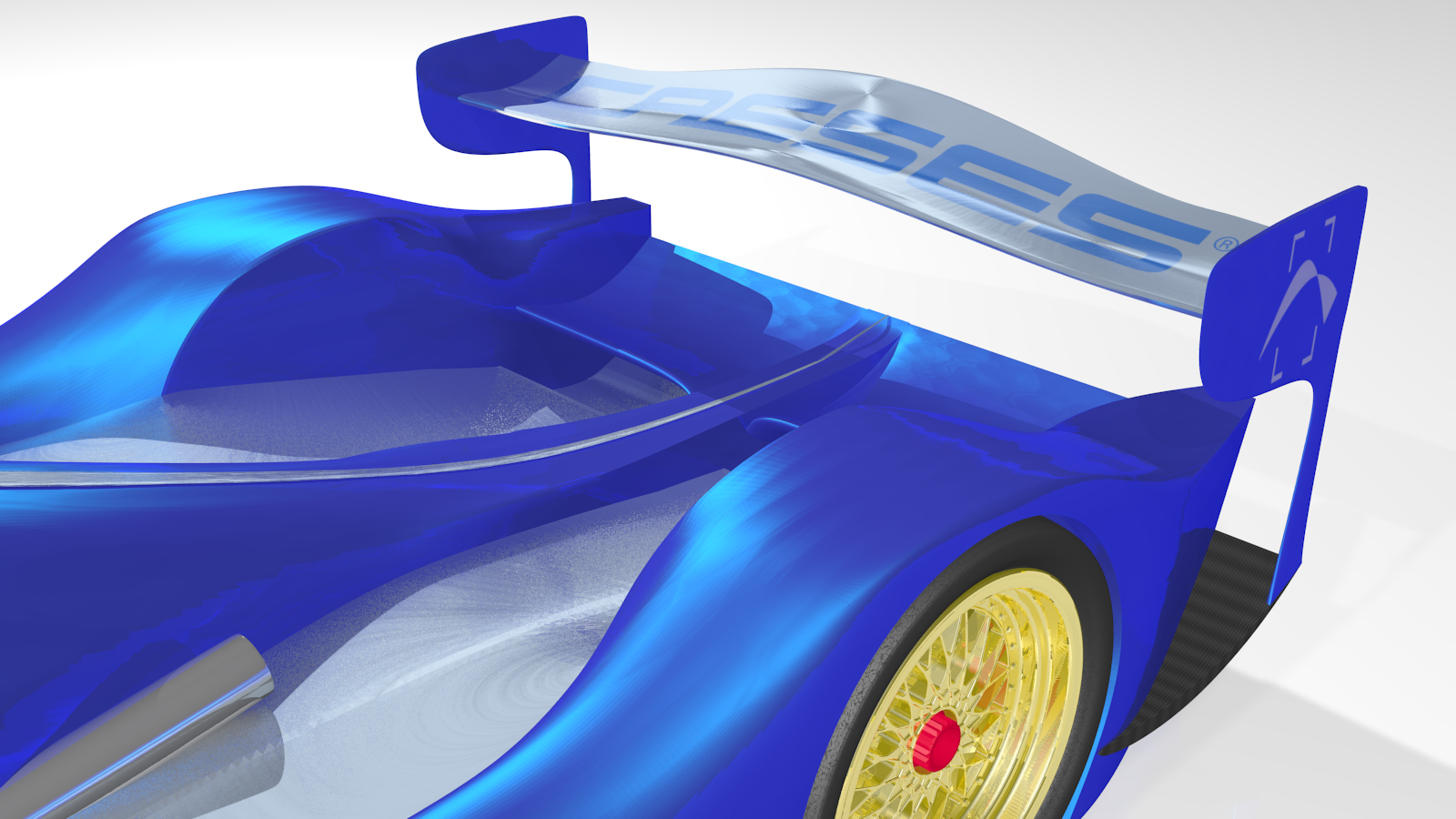
Rear Wing, created with CAESES
Also, it is time for the last KVRC race, in which MantiumCAE is competing with the virtual racing team MantiumRAY.
The new car was mainly developed using CAESES. In previous races, it was for example used to generate wing profiles, which were used to create the rear wing by means of a simple straight extrusion. For this race the wing was also parametrized along the wing span. This should be a key element of bringing MantiumRAY back to the very top of the podium.
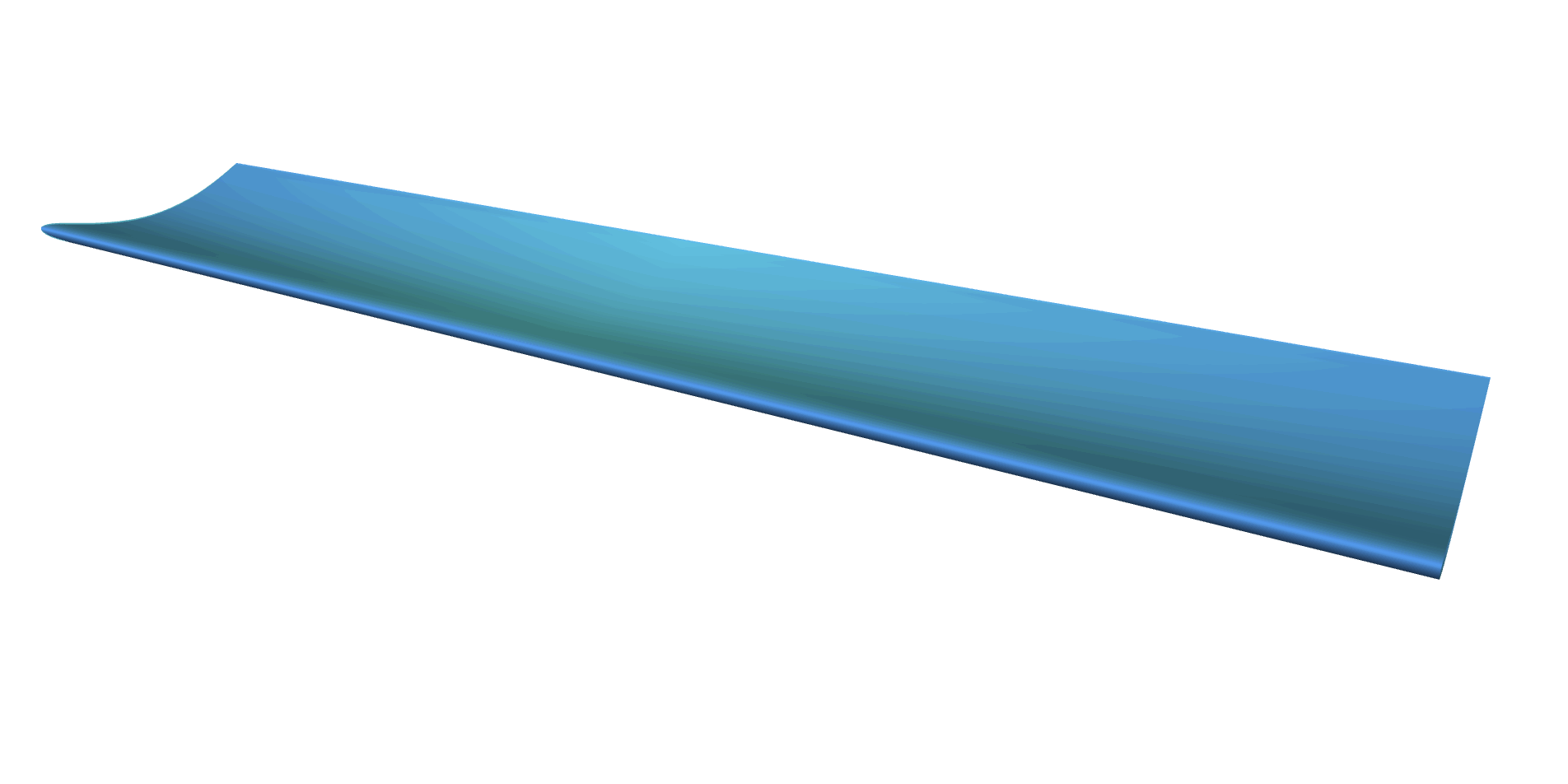
Parametrized rear wing
The optimization showed that wings with good lift to drag values could not create the necessary levels of down force to balance the car. But as the new rear wing showed to be elegant and efficient, the car had to be balanced again. As the car had also been fully parametrized and run through a DoE, lots of data was available to balance the car using analytical methods. This showed to be very difficult, as every parameter that shifts the balance further to the rear was detrimental towards the other important performance factor: Lift / Drag. The following plots show this trade-off for the rear wing height:

Plots showing L/D and CoP over the rear wing height
Carefully using this data, the car was balanced and now reaches new levels of performance. Below are images of the new car:
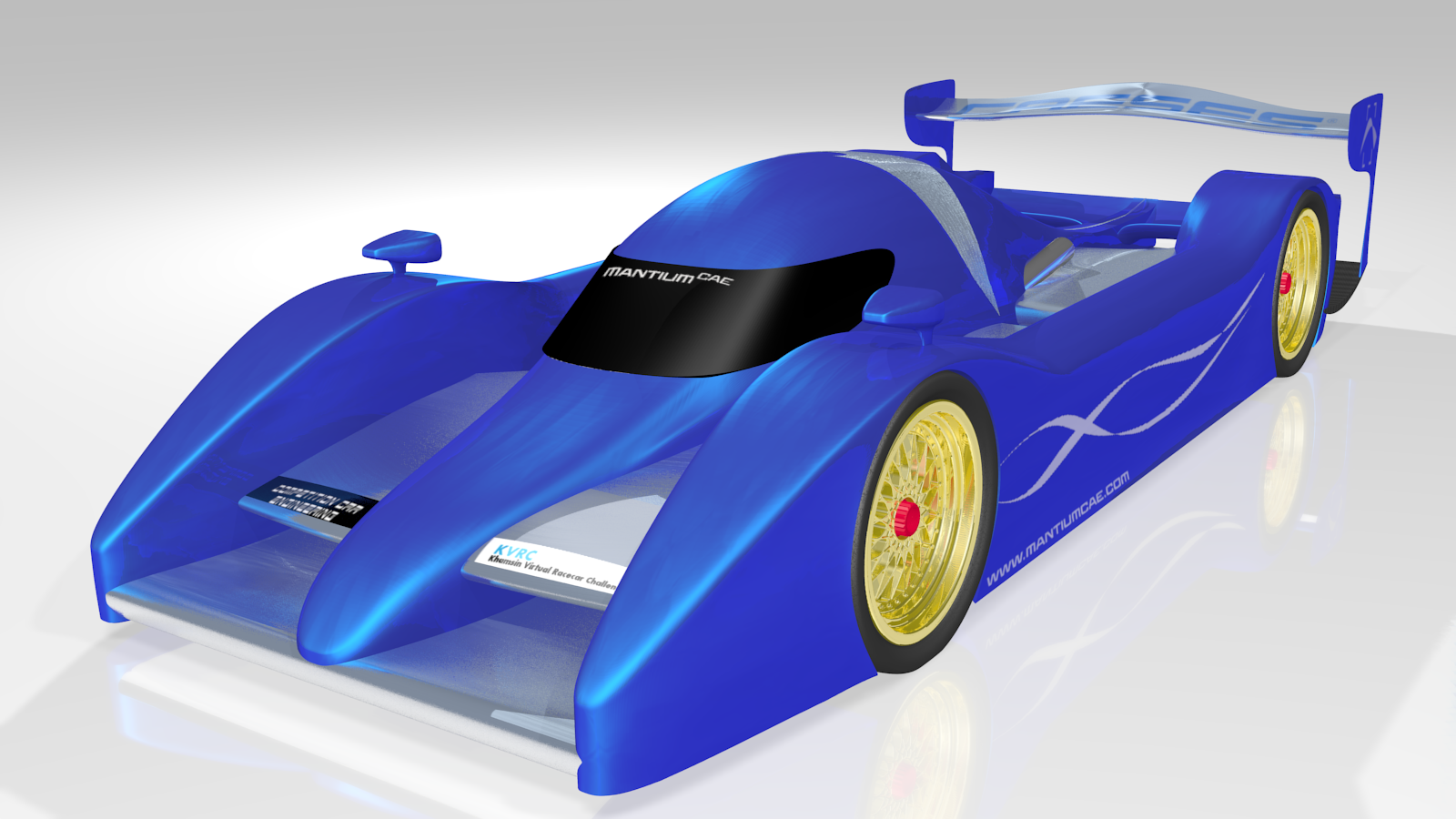
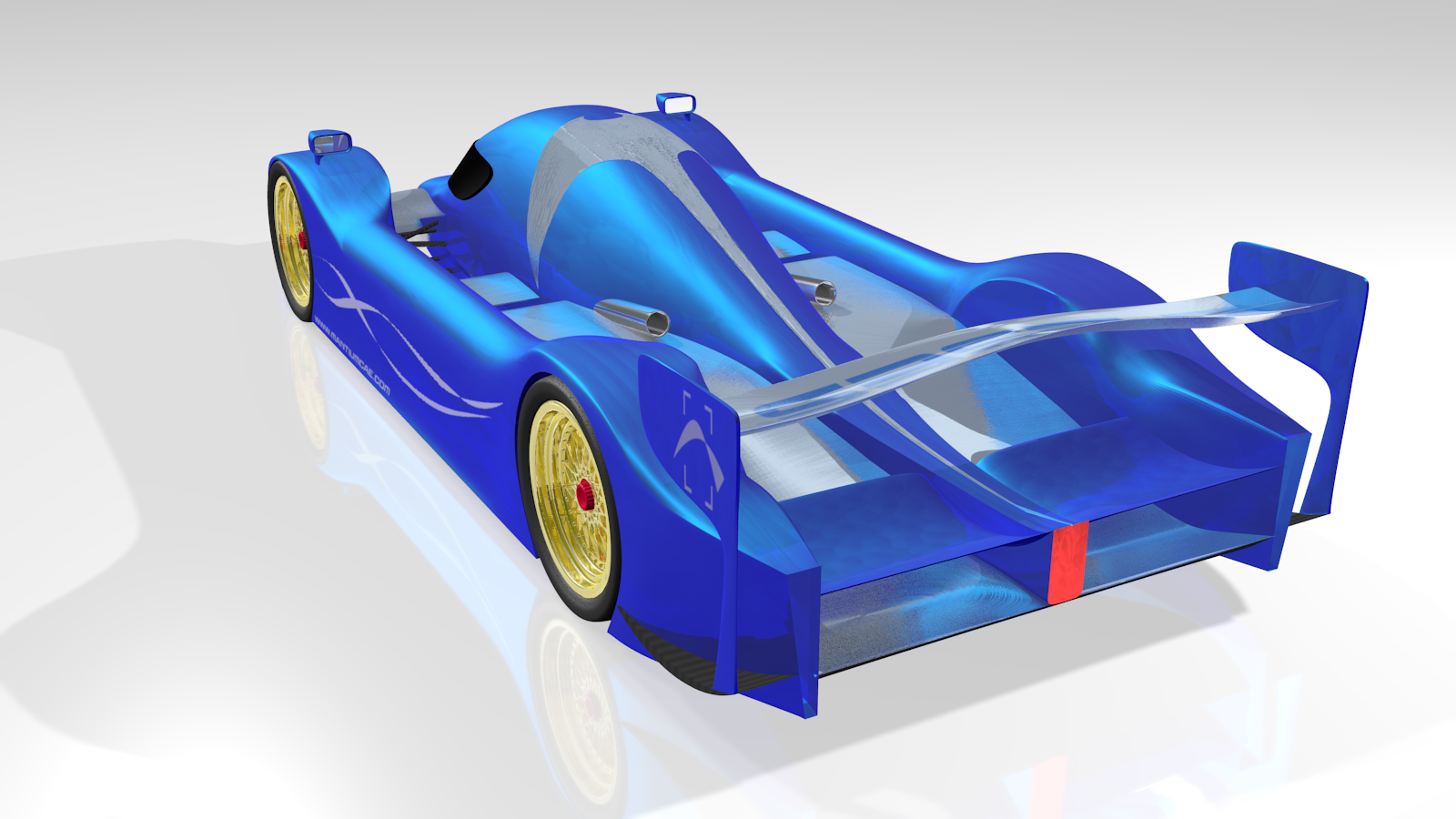 If this will prove to be sufficient, will be seen soon in the challenge, so please stay tuned or visit the forum.
If this will prove to be sufficient, will be seen soon in the challenge, so please stay tuned or visit the forum.
XFlow on Rescale’s Cloud Simulation & CAESES Experience Day in Stuttgart
The XFlow User Conference is over. MantiumCAE showed a well received presentation about cylinder head flows, DRS rear wing and flying cars.
The material from the conference should get uploaded soon to the conference homepage.
So far one very interesting and spectacular video has been made available:
Please take notice that everything seen here is happening inside of XFlow, once more showcasing the power of moving geometries together with the integrated body dynamics solver.
For anyone interested in running large scale CFD simulations there will be a webinar on how to use XFlow on the Rescale Cloud platform next Tuesday:
Accelerate XFlow Analyses on Rescale’s Cloud Simulation Platform
Another very interesting event will be the CAESES Experience Day Stuttgart on the 22. of October:
CAESES Experience Day Stuttgart
For more info on CAESES, please visit their homepage. There is even a free version of CAESES available!